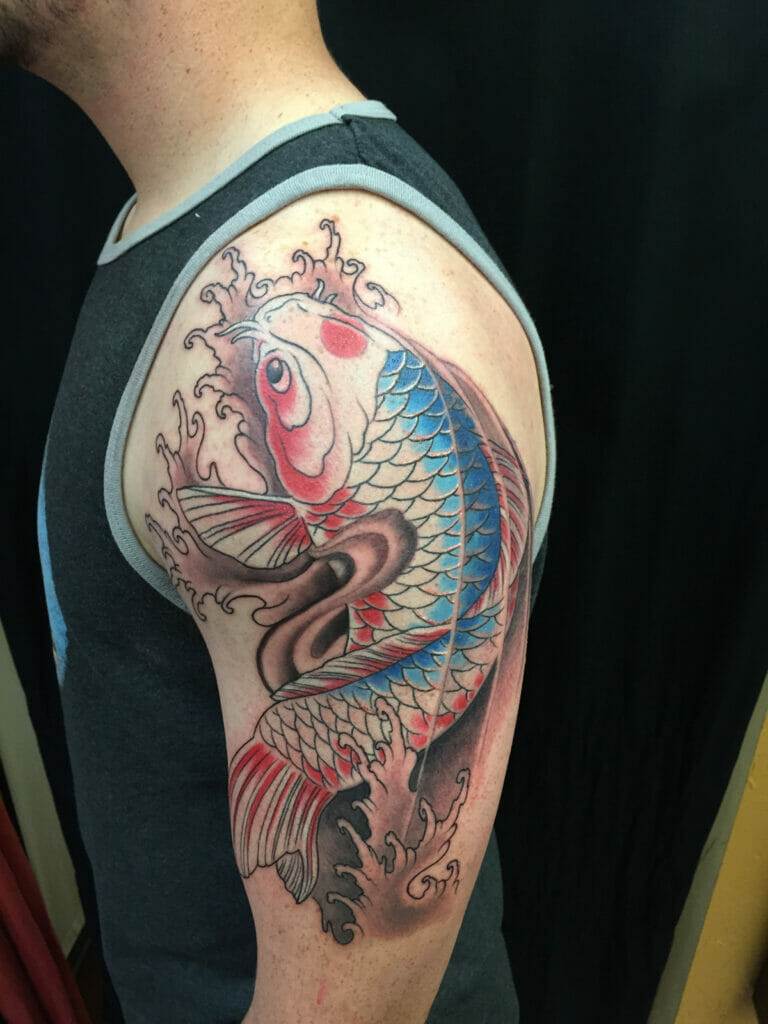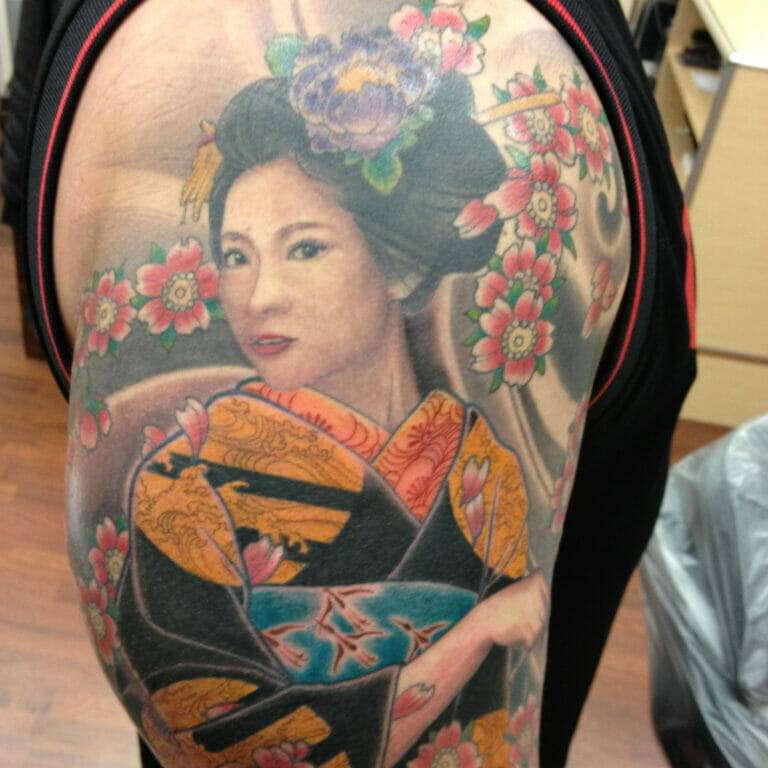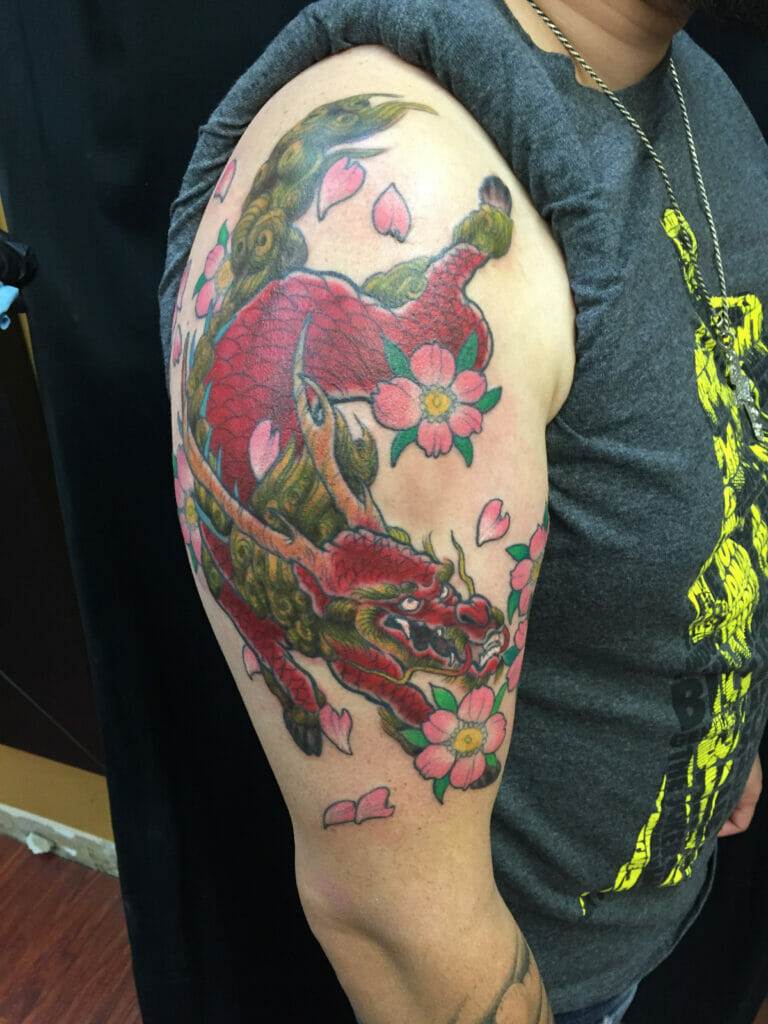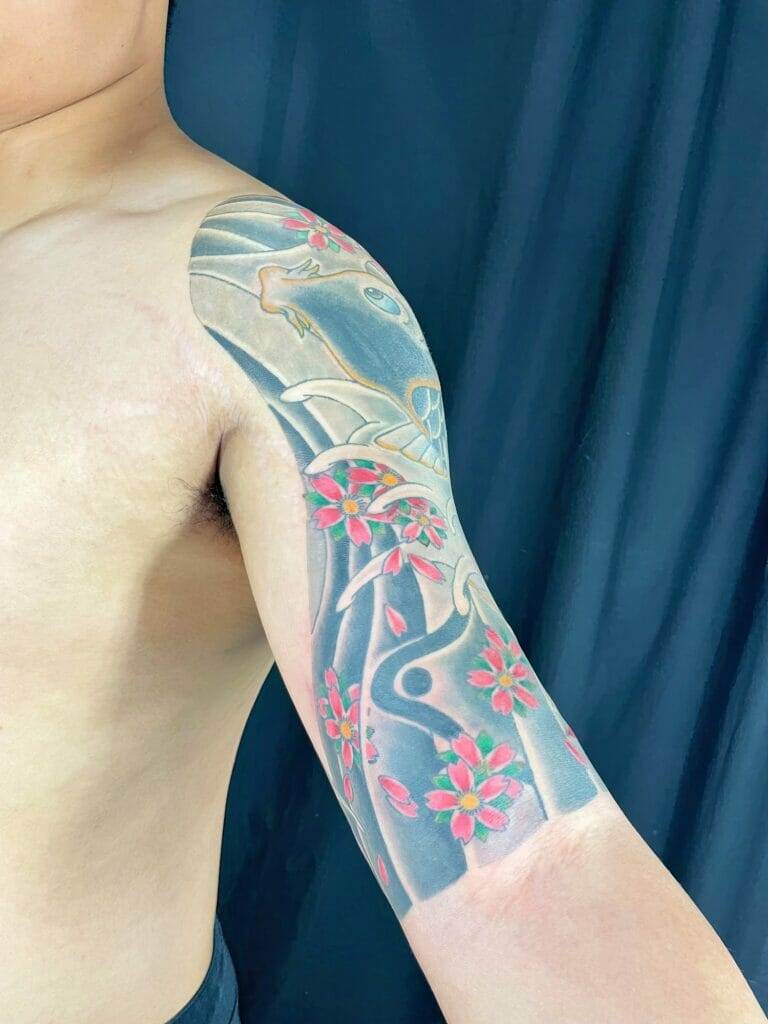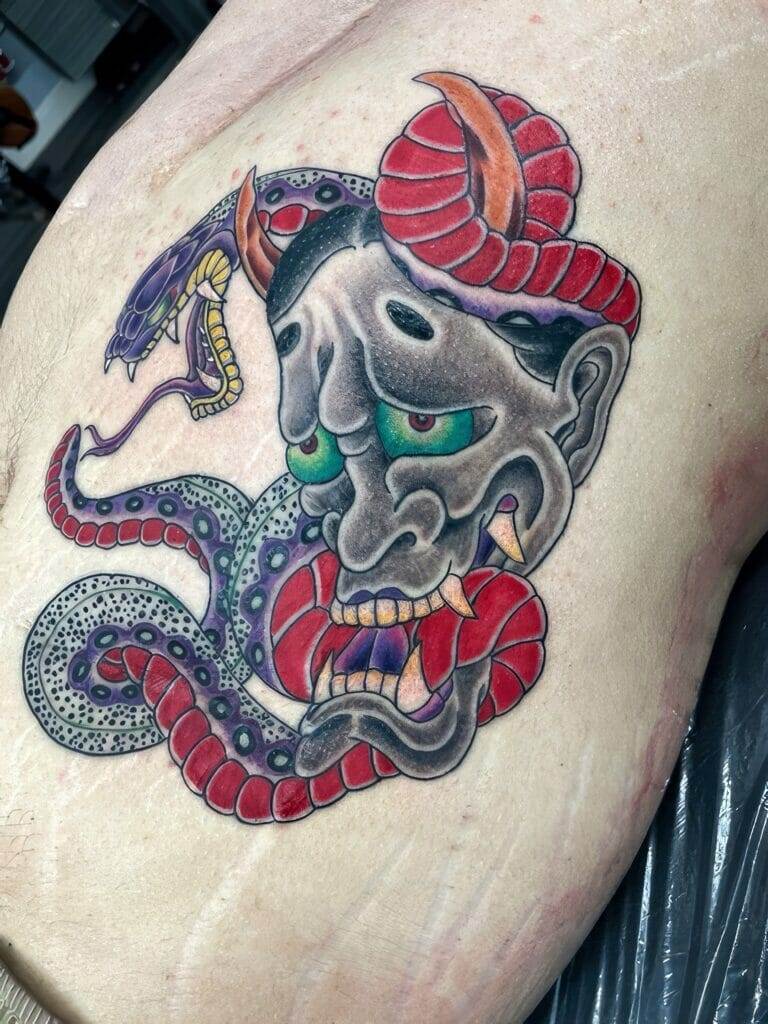
Japanese tattoos have a rich history and deep cultural significance in Japan. They are not just a form of body art, but also a reflection of the country’s history, traditions, and values. Understanding the history and symbolism of Japanese tattoos is crucial in order to appreciate and respect their significance. This article will provide a comprehensive overview of Japanese tattoos, exploring their origins, evolution, symbolism, and impact on both Japanese and Western cultures.
The History of Japanese Tattoos: A Brief Overview
Tattoos have been a part of Japanese culture for centuries. The origins of tattoos in Japan can be traced back to the Jomon period (10,000 BCE – 300 BCE), where clay figurines with tattoo-like markings were discovered. However, it was during the Kofun period (300 CE – 600 CE) that tattoos began to be used as a form of body adornment and identification.
In the early days, tattoos were primarily used by indigenous Ainu people and fishermen to protect themselves from evil spirits and to mark their social status. However, during the Heian period (794 CE – 1185 CE), tattoos became associated with criminal activity and were used as a form of punishment and identification for criminals.
Criminal Markings in Edo Japan: The Origins of Irezumi
During the Edo period (1603 CE – 1868 CE), tattoos became more prevalent in Japanese society, particularly among the lower classes. Criminals were marked with irezumi, which involved intricate full-body tattoos that served as a permanent symbol of shame and punishment. These tattoos were often done using the tebori technique, a traditional method of hand-poking the ink into the skin.
Over time, irezumi transitioned from being a symbol of shame to a symbol of pride. Tattooed individuals who had served their sentences often found it difficult to reintegrate into society due to the stigma associated with their tattoos. As a result, they formed their own communities and subcultures, where tattoos became a source of identity and pride.
The Art of Tebori: Traditional Japanese Tattooing Techniques
Tebori is the traditional Japanese tattooing technique that has been used for centuries. Unlike modern tattooing methods that use electric machines, tebori involves hand-poking the ink into the skin using a set of specialized tools. This technique allows for greater control and precision, resulting in highly detailed and intricate designs.
The tools used in tebori include a set of needles attached to a wooden or metal handle, as well as a small mallet or hammer. The artist dips the needles into ink and then taps them into the skin using the mallet, creating a series of small punctures. This process is repeated thousands of times to create the desired design.
Tebori is not only a technique but also a form of art in itself. It requires years of practice and mastery to achieve the level of skill and precision needed to create beautiful and intricate tattoos. The slow and meticulous process of tebori also allows for a deeper connection between the artist and the client, making it a more intimate and personal experience.
The Symbolism of Japanese Tattoos: Meanings and Significance
Japanese tattoos are known for their rich symbolism and deep meanings. They often feature traditional Japanese motifs such as dragons, koi fish, cherry blossoms, geisha, samurai, and mythical creatures like phoenixes and tigers. Each of these symbols carries its own significance and represents different qualities or values.
For example, dragons are seen as powerful and wise creatures that symbolize strength, courage, and protection. Koi fish represent perseverance and determination, as they are known for swimming upstream against strong currents. Cherry blossoms are associated with beauty, transience, and the fleeting nature of life.
The significance of Japanese tattoos goes beyond their aesthetic appeal. They are seen as a form of self-expression and a way to connect with one’s cultural heritage. Japanese tattoos also serve as a form of protection and good luck charm, as they are believed to ward off evil spirits and bring fortune and prosperity.
The Influence of Japanese Tattoos on Western Art and Culture
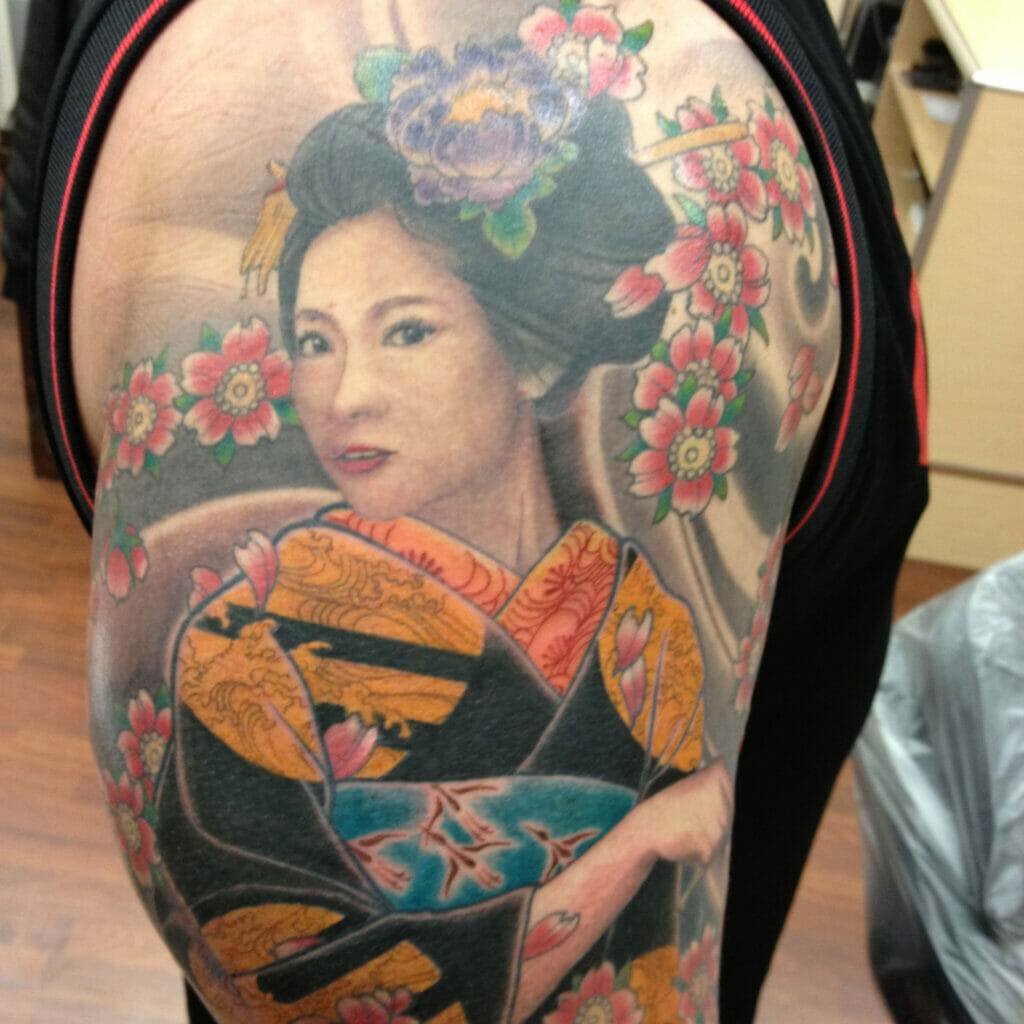
Japanese tattoos have had a significant impact on Western art and culture, particularly in the world of tattooing. The introduction of Japanese tattoos to the West can be traced back to the late 19th century when Japanese immigrants brought their tattooing traditions with them.
Western artists and tattoo enthusiasts were captivated by the intricate designs, bold colors, and deep symbolism of Japanese tattoos. They began incorporating Japanese motifs and techniques into their own work, leading to the emergence of a distinct style known as “Japanese-inspired” or “Neo-Japanese” tattooing.
This fusion of Eastern and Western tattooing styles has become increasingly popular in recent years, with many tattoo artists around the world specializing in Japanese-inspired designs. The influence of Japanese tattoos can also be seen in other forms of art, such as paintings, illustrations, and fashion.
The Rise of Yakuza Tattoos: Gang Culture and Irezumi
In Japanese society, tattoos have long been associated with the yakuza, Japan’s notorious organized crime syndicates. Yakuza members often sport full-body tattoos that serve as a form of identification and loyalty to their respective gangs. These tattoos are typically done using the tebori technique and feature traditional Japanese motifs such as dragons, tigers, and samurai.
Yakuza tattoos are not just a form of body art but also a reflection of the gang’s hierarchy, values, and code of conduct. They often tell a story or convey a message about the wearer’s status within the organization. Yakuza members wear their tattoos with pride and see them as a symbol of honor, loyalty, and strength.
However, the association of tattoos with the yakuza has led to a negative perception of tattoos in Japanese society. Many public places, such as hot springs, swimming pools, and gyms, have strict no-tattoo policies, as tattoos are seen as a sign of criminal activity. This has created challenges for individuals with tattoos who face discrimination and prejudice in various aspects of their lives.
The Ban on Tattoos in Japan: Legal and Social Implications
The negative perception of tattoos in Japan has led to a ban on tattooing without a medical license. Under Japanese law, only licensed medical professionals are allowed to perform tattooing. This ban dates back to the Meiji period (1868 CE – 1912 CE) when Japan was modernizing and adopting Western values.
The ban on tattoos has had significant legal and social implications. It has forced many tattoo artists to operate underground or in private studios, making it difficult for them to practice their craft openly. It has also created a stigma around tattoos, leading to discrimination and prejudice against individuals with visible tattoos.
However, in recent years, there has been a growing movement to challenge the ban on tattoos and promote acceptance and understanding of tattoo culture in Japan. Some local governments have relaxed their regulations and are allowing tattooed individuals to enter public facilities as long as their tattoos are covered. This shift reflects a changing attitude towards tattoos and a recognition of their cultural significance.
The Modern Japanese Tattoo Scene: Contemporary Styles and Trends
In recent years, there has been a resurgence of interest in traditional Japanese tattooing techniques and motifs. Many young Japanese people are embracing their cultural heritage and getting traditional-style tattoos to connect with their roots. At the same time, there is also a growing interest in contemporary Japanese tattoo styles that incorporate elements of Western tattooing.
Contemporary Japanese tattoo styles often feature a fusion of traditional Japanese motifs with modern elements such as realism, abstract art, and graphic design. This blending of styles allows for greater creativity and experimentation, resulting in unique and innovative tattoo designs.
The influence of Western tattooing on Japanese tattooing can be seen in the use of color, shading techniques, and subject matter. Western-style tattoos often feature bold, vibrant colors and realistic imagery, which have become popular among Japanese tattoo enthusiasts.
The Role of Japanese Tattoo Artists in the Global Tattoo Community
Japanese tattoo artists have played a significant role in shaping the global tattoo community. Their mastery of traditional Japanese tattooing techniques and their deep understanding of Japanese culture and symbolism have earned them respect and admiration from artists around the world.
Japanese tattoo artists are known for their dedication to their craft and their commitment to preserving traditional techniques. Many apprenticeships in Japan can last for several years, during which aspiring tattoo artists learn not only the technical skills but also the cultural and historical significance of Japanese tattoos.
The impact of Japanese tattooing on the global tattoo industry can be seen in the popularity of Japanese-inspired designs and the demand for skilled Japanese tattoo artists. Many tattoo conventions and exhibitions around the world feature Japanese artists as special guests, allowing them to showcase their work and share their knowledge with a wider audience.
The Future of Japanese Tattoos: Preservation and Innovation in the 21st Century
The future of Japanese tattoos is a delicate balance between preserving traditional techniques and embracing innovation. While there is a growing interest in traditional Japanese tattooing, there are also challenges in preserving these techniques in a rapidly changing world.
One of the challenges is finding apprentices who are willing to dedicate years to learning traditional techniques. Many young people are drawn to modern tattooing methods that are faster and less labor-intensive. This poses a risk to the preservation of tebori and other traditional techniques that require patience, skill, and dedication.
However, there is also potential for innovation in Japanese tattooing. As the global tattoo community continues to evolve and embrace new technologies, Japanese tattoo artists can explore new techniques and styles while staying true to their cultural heritage. This balance between tradition and innovation is crucial in ensuring the continued relevance and vitality of Japanese tattooing in the 21st century.
Japanese tattoos have a long and rich history that is deeply intertwined with Japanese culture. They are not just a form of body art but also a reflection of Japan’s traditions, values, and identity. Understanding and respecting the history and symbolism of Japanese tattoos is crucial in order to appreciate their significance and cultural importance.
From their origins as criminal markings to their transformation into symbols of pride and identity, Japanese tattoos have evolved over time. The traditional tebori technique, with its meticulous hand-poking process, adds to the artistry and significance of Japanese tattoos.
Japanese tattoos have also had a significant impact on Western art and culture, influencing tattooing styles and techniques around the world. However, the association of tattoos with the yakuza has led to a ban on tattooing in Japan, creating legal and social implications for individuals with tattoos.
Despite these challenges, there is a growing interest in traditional Japanese tattooing techniques and motifs, both in Japan and around the world. Japanese tattoo artists play a vital role in preserving these traditions and promoting understanding and acceptance of tattoo culture.
The future of Japanese tattoos lies in finding a balance between preserving traditional techniques and embracing innovation. By honoring their cultural heritage while exploring new styles and techniques, Japanese tattoo artists can ensure the continued relevance and vitality of Japanese tattooing in the 21st century.
If you’re interested in exploring the vibrant world of watercolor tattoo designs, then you’ll love this article from Funhouse Guesthouse. Immerse yourself in the stunning masterpieces created by their talented artists in San Diego. From bold and colorful designs to delicate and ethereal creations, watercolor tattoos are a unique form of artistic expression that will leave you in awe. Discover the beauty and creativity of watercolor tattoos at Funhouse Guesthouse by checking out their article here.

